The University of Chicago Press, Chicago 60637
The University of Chicago Press, Ltd., London
2018 by The University of Chicago
All rights reserved. No part of this book may be used or reproduced in any manner whatsoever without written permission, except in the case of brief quotations in critical articles and reviews. For more information, contact the University of Chicago Press, 1427 East 60th Street, Chicago, IL 60637.
Published 2018
Printed in the United States of America
27 26 25 24 23 22 21 20 19 18 1 2 3 4 5
ISBN -13: 978-0-226-53278-3 (cloth)
ISBN -13: 978-0-226-53281-3 (paper)
ISBN -13: 978-0-226-53295-0 (e-book)
DOI : 10.7208/chicago/9780226532950.001.0001
Library of Congress Cataloging-in-Publication Data
Names: Dinan, John J., author.
Title: State constitutional politics : governing by amendment in the American states / John Dinan.
Description: Chicago ; London : The University of Chicago Press, 2018. | Includes bibliographical references and index.
Identifiers: LCCN 2017045684 | ISBN 9780226532783 (cloth : alk. paper) | ISBN 9780226532813 (pbk. : alk. paper) | ISBN 9780226532950 (e-book)
Subjects: LCSH : Constitutional amendmentsUnited StatesStates. | State governmentsUnited States.
Classification: LCC KF 4555. A 25 D 56 2017 | DDC 342.7303/2dc23
LC record available at https://lccn.loc.gov/2017045684

This paper meets the requirements of ANSI/NISO Z 39.48-1992 (Permanence of Paper).
The meaning and development of the national constitution is best traced through the many authoritative decisions made by the national supreme court in interpreting the constitution; but by contrast the interpretations given by state supreme courts of their respective constitutions are of far less permanent importance, since the real history of the constitutional development of the states can best be traced decade by decade in the many amendments and revisions made so as to satisfy popular demands for reforms in existing systems.... One might almost say that the romance, the poetry and even the drama of American politics are deeply embedded in the many state constitutions.... For in them are recorded the growth in the notion of rights, irrespective of race, sex or economic status; the rise of manhood suffrage, its extension to women and modern reactions against the principle of unrestricted voting; and the developing emphasis on morals in provisions about dueling, lotteries, divorce, polygamy and the prohibition of the manufacture and sale of liquor. One may cynically note the earlier belief that legislators were men of wisdom and virtue, followed by a conviction expressed in most constitutions that they are likely to be corrupt and incompetent and regularly prone to bribery.... Such and similar changes may be traced in the state constitutions, which unquestionably will in later years be considered as exponents of the conditions and demands of their times, and as among the most valued records of social, political, and constitutional history. James Q. Dealey, Growth of American State Constitutions from 1776 to the End of the Year 1914
My purpose in this book is to show that American state constitutions are more easily and frequently amended than the US Constitution and that, as a consequence, state constitutional amendments have been a regular means of altering institutions, rights, and policies in a way that might be deemed in key respects preferable to the approach at the federal level, where these changes are invariably achieved through legislation or litigation.
Due to the rigidity of the US Constitutions Article V amendment process and a reluctance to use the process, federal amendments play only a modest role in bringing about changes in governing authority.
Consider the ways notable changes in governing authority have been achieved at the federal level. Some changes are undertaken in an informal fashion, through adjustments in the behavior of presidents and Congress members and with little resort to amendments, legislation, or litigation,
The situation is quite different in the fifty states, where amendment processes are more accessible and groups and officials are more willing to resort to these processes. more accessible and are in every state relied on more frequently than the federal amendment process.
One of my purposes in this book is to show that state amendment processes are flexible enough to permit citizens, groups, and officials to pursue changes in governing authority on a regular basis by enacting amendments. In , I trace the evolution and use of state amendment processes. I show that the regular passage of amendments, whether generated by legislatures, citizens, conventions, or commissions (with the first two mechanisms responsible for nearly all amendments in recent years), can be attributed to the flexibility of state amendment rules as well as a constitutional culture that tolerates and even encourages frequent amending.
My second goal is to show that the willingness to enact amendments has produced a distinctive form of constitutional politics in the states. To be sure, changes in state governing authority are often achieved through political and judicial processes, as at the federal level. Groups dissatisfied with the performance of governing institutions work through state electoral processes to elect a fresh set of representatives. Groups and movements seeking to bring about new understandings of rights take their case to state court and with occasional success. Groups and individuals striving for policy changes lobby state legislators and governors and persuade them to enact desired policies. However, the accessibility of state amendment processes offers an alternative means of pursuing these changes.
With the aim of setting out the distinctive form that constitutional politics takes in the states, I categorize and catalog the ways amendments have served as instruments of governance throughout American history. I identify the leading occasions when citizens, groups, and officials relied on amendments to change institutions, rights, and policies, and I explain why they proceeded through the amendment process rather than other mechanisms.
Focusing first on amendments that alter governing institutions, analyzes institutional-authority amendments that transfer authority among governing institutions. On various occasions, amendments have shifted the balance of power among institutions and officials, often by transferring authority from legislators to other officials, whether by instituting municipal home rule, establishing regulatory commissions and administrative agencies, creating executive-budget systems, or vesting control of redistricting in commissions.
analyzes court-responsive amendments enacted in reaction to state court decisions. On various occasions when state courts have issued rulings requiring stricter separation of church and state, expanding rights of criminal defendants, limiting use of the death penalty, or recognizing abortion rights, the flexibility of state amendment processes offered groups and officials who were dissatisfied with these rulings a path to overturning them or limiting their effect.
Turning to the prominent and varied role of amendments regarding public policy, I analyze three types of policy-related amendments. analyzes

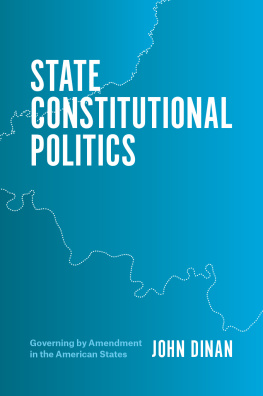

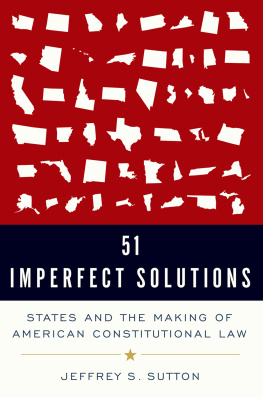
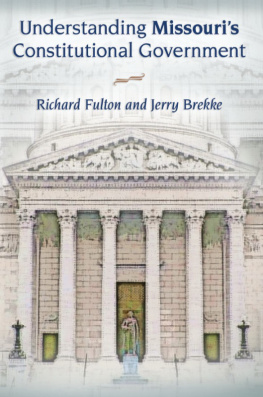

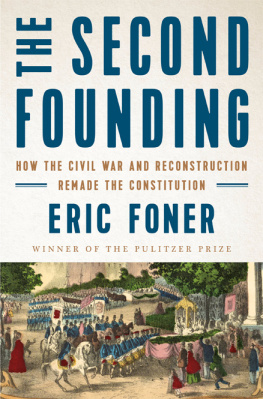
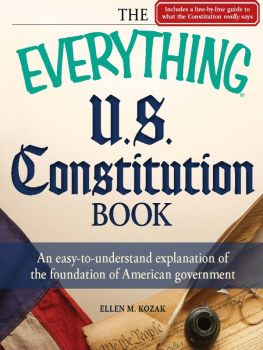
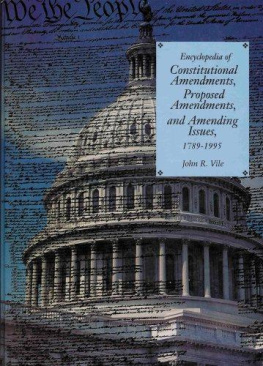
 This paper meets the requirements of ANSI/NISO Z 39.48-1992 (Permanence of Paper).
This paper meets the requirements of ANSI/NISO Z 39.48-1992 (Permanence of Paper).